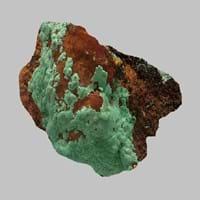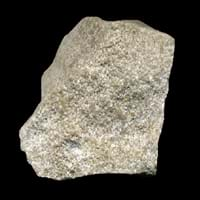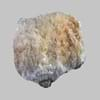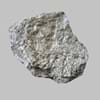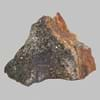Definition
Gossan is intensely oxidized, weathered or decomposed rock, usually the upper and exposed part of an ore deposit or mineral vein.
Oolite is a sedimentary rock formed from ooids, spherical grains which are composed of concentric layers of calcite
Discoverer
Cornish Gossen
Unknown
Etymology
From Cornish gossen from gos, blood from Old Cornish guit
From oo- + -lite, after German Oolit. A rock consisting of fine grains of carbonate of lime
Class
Metamorphic Rocks
Sedimentary Rocks
Sub-Class
Durable Rock, Medium Hardness Rock
Durable Rock, Medium Hardness Rock
Group
Not Applicable
Volcanic
Other Categories
Fine Grained Rock, Medium Grained Rock, Opaque Rock
Fine Grained Rock, Opaque Rock
Texture
Rough, Sandy
Clastic or Non-Clastic
Color
Brown, Brown- Black, Gold, Green, Rust
Black, Blue, Brown, Cream, Green, Grey, Pink, Red, Silver, White, Yellow
Durability
Durable
Durable
Scratch Resistant
Yes
Yes
Appearance
Dull and Banded
Rounded and Rough
Interior Uses
Countertops, Decorative Aggregates, Interior Decoration
Decorative Aggregates, Flooring, Interior Decoration
Exterior Uses
As Building Stone, As Facing Stone, Paving Stone, Garden Decoration, Office Buildings
As Building Stone, As Facing Stone, Garden Decoration, Paving Stone
Other Architectural Uses
Curbing
Not Yet Used
Construction Industry
As Dimension Stone, Cement Manufacture, Construction Aggregate, for Road Aggregate
Cement Manufacture, Cobblestones, Landscaping
Medical Industry
Not Yet Used
Not Yet Used
Antiquity Uses
Artifacts
Artifacts
Commercial Uses
Cemetery Markers, Commemorative Tablets, Gemstone
Creating Artwork, Jewelry, Used in aquariums
Types
Translocated gossan and Leakage gossan
Not Available
Features
Clasts are smooth to touch, Easily splits into thin plates
Available in lots of colors, Generally rough to touch, Very fine grained rock
Archaeological Significance
Monuments
Not Yet Used
Not Yet Used
Famous Monuments
Not Applicable
Not Applicable
Sculpture
Not Yet Used
Not Yet Used
Famous Sculptures
Not Applicable
Not Applicable
Figurines
Not Yet Used
Not Yet Used
Formation
Earth movements can cause rocks to be either deeply buried or squeezed and hence the rocks are heated and put under great pressure.
Oolites form when layers of calcite are deposited around a sand grain or fossil piece and are rolled around in calm water, which makes them round.
Mineral Content
Apatite, Augite, Biotite, Bronzite, Calcite, Chert, Epidote, Feldspar, Hornblende, Micas, Plagioclase, Pyroxene, Quartz, Sulfides, Zircon
Calcite, Chert, Clay, Dolomite, Quartz, Sand, Silt
Compound Content
Aluminium Oxide, CaO, Fe, FeO, Silicon Dioxide, Sulphur
Aluminium Oxide, Ca, NaCl, CaO, Iron(III) Oxide, FeO, MgO
Types of Metamorphism
Not Applicable
Not Applicable
Types of Weathering
Not Applicable
Biological Weathering, Chemical Weathering, Mechanical Weathering
Types of Erosion
Chemical Erosion, Sea Erosion, Wind Erosion
Chemical Erosion, Coastal Erosion
Grain Size
Fine to Medium Grained
Fine Grained
Fracture
Conchoidal
Conchoidal
Streak
White to Grey
White
Porosity
Highly Porous
Less Porous
Luster
Metallic
Pearly to Shiny
Cleavage
Not Available
Non-Existent
Toughness
Not Available
1
Specific Gravity
2.0
Not Available
Transparency
Opaque
Opaque
Density
Not Available
Not Available
Specific Heat Capacity
Not Available
Resistance
Heat Resistant, Impact Resistant, Pressure Resistant
Heat Resistant, Wear Resistant
Deposits in Eastern Continents
Asia
China, India, Indonesia, Russia, Singapore, South Korea
Brunei, India, Indonesia, Malaysia, Singapore, Thailand, Vietnam
Africa
Cape Verde, Ethiopia, Ghana, South Africa, Western Africa
Cameroon, Chad, Ghana, Kenya, Malawi, Sudan, Tanzania, Togo, Zambia, Zimbabwe
Europe
Albania, France, Germany, Great Britain, United Kingdom
United Kingdom
Others
Not Yet Found
Not Yet Found
Deposits in Western Continents
North America
Canada, USA
USA
South America
Brazil, Colombia, Ecuador
Colombia
Deposits in Oceania Continent
Australia
New South Wales, South Australia, Western Australia
Adelaide, New Zealand, Queensland, Tonga, Victoria, Yorke Peninsula
All about Gossan and Oolite Properties
Know all about Gossan and Oolite properties here. All properties of rocks are important as they define the type of rock and its application. Gossan belongs to Metamorphic Rocks while Oolite belongs to Sedimentary Rocks.Texture of Gossan is Rough, Sandy whereas that of Oolite is Clastic or Non-Clastic. Gossan appears Dull and Banded and Oolite appears Rounded and Rough. The luster of Gossan is metallic while that of Oolite is pearly to shiny. Gossan is available in brown, brown- black, gold, green, rust colors whereas Oolite is available in black, blue, brown, cream, green, grey, pink, red, silver, white, yellow colors. The commercial uses of Gossan are cemetery markers, commemorative tablets, gemstone and that of Oolite are creating artwork, jewelry, used in aquariums.
